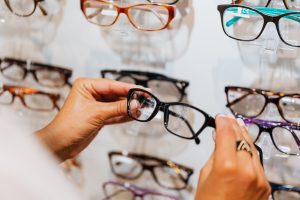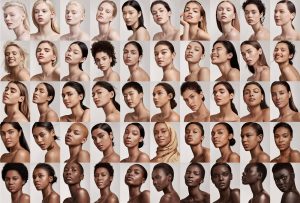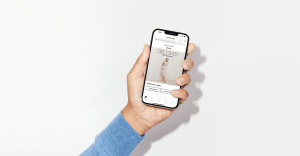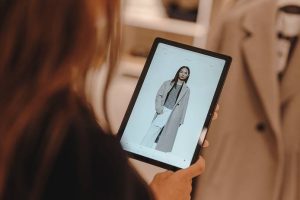As technology and customer preferences continue to evolve, the e-commerce world is adjusting with it. Something that is reflected in the trends we will see in the fashion retail e-commerce industry in the years to come.
The coronavirus crisis has sped up a trend in retail shopping: High Street is giving way to online-focused shopping experiences. And the consumer experience is quite different online that it is in a physical shop. Online shops need to adapt to frequent online shoppers and their purchase journey. Brands need to continue to invest more and more in customer loyalty, according to Harvard Review, acquiring a new customer is anywhere from five to 25 times more expensive than retaining an existing one.
Furthermore, existing customers, on average, spend 67% more per purchase than new customers. That puts trust as the most important focus for a retailer. But trust needs to be earned, and if somebody is making an order from what seems to them like an unreliable webshop, they will be less likely to risk and order more. In the first purchase, customers will likely be testing the overall experience and it can be a huge deciding factor of any second purchase.
Bearing these in mind, let us look at 5 fashion e-commerce industry trends shaping the fashion industry, according to experts Slavica Grgic and Mario Stipetic:
1. Ethical brands are disrupting the fast fashion economy
Fast fashion has really lived up to its name. Brands like Zara, H&M and ASOS reported growth year after year, but for how long? Online shoppers are starting to care more about the sustainability of their purchase, leading to a drop in site traffic across many fast fashion brands. According to a Gartner L2 report, Zara brand had 6%, H&M 10% and Forever21 had 26% fewer web visits in 2019 than in 2018.
Why is that happening? A new batch of disruptors has raised the bar of digital sophistication, focusing on quality, user experience and functionality, and threatened the fast fashion specialty retailers.
Top players in the fashion e-commerce world cannot keep up with the disruptors and their fast implementation of side features such as no minimum free shipping; persistent live chat; keyword search preview; product page live chat and tutorial content.
2. Reviews are the key to fighting high return rates
Asos, one of the biggest names in the online fashion e-commerce, recently tweeted asking their customers what they want to see in their app. Two of the most liked comment were about the reviews. People trust other people, simple as that. This is a sure way of fighting what is one of the biggest problems in fashion e-commerce – high rates of returns. When you are shopping online, you need to find the clothes of the right size without the option of trying these clothes on before buying. That is why the majority of online shoppers over-order to ensure they find the right size. After all, online shoppers are tasked with finding clothes that fit even though they do not have the opportunity to try these clothes on before buying. Some even take part in a social media challenge “snap and send back” whereby consumers buy simply for the purposes of posting an #OOTD (Outfit of the day) picture on Instagram, then return the item(s).
3. AR shopping
It is much more convenient to shop from home, but there are definitely some downsides to online shopping. When you are shopping for clothes online, you cannot try on the clothes, feel the fabric or instantly know does something fit or not. The lack of physical connection often can lead to shopper hesitation and lead to fewer sales. But the new technologies like augmented reality and virtual reality can help to overcome this obstacle.
AR has been integrated in multiple shops with success. This technology doesn’t offer a full immersive experience as VR, but it can overlay different digital images atop real-world surroundings, making the shopping experience engaging, unique and personal.
4. The Omnichannel experience
Amazon’s success resulted in many physical bookshops being closed, but now, Amazon has another strategy. Amazon is going offline and there are now more than 50 Amazon Bookstores across the United States.
Those shops serve a bigger purpose than just selling books. You will find plenty of Amazon’s gadgets in the store, such as Kindle and Echo. People can shop, try it out for themselves and give it ago before committing to purchase online. Apple has the same technique with their Apple Stores. Apple is probably the best example of what omnichannel means. Besides considering all the different channels used by their customers, everything is designed around the same principles to create a single, unified feeling. The physical stores’ design reminds of the Apple products, and they allow you to interact with them at the store. Once you have purchased an Apple product, their own entertainment apps keep you engaged.
5. The Rise of shoppable ads on social media
Both Google and Instagram introduced shoppable ads in the past couple of months. We will only see more of this trend, making it super easy to shop while you’re scrolling on Instagram. The photo-sharing social media platform is quickly becoming the central hub for branded fashion content and powerful user-generated marketing. In the fashion industry, it can be difficult to build trust. By turning to influencers, fashion brands can gain endorsements from trusted product curators who boast massive followings.
Not only that, but retailers could learn a thing or two from Instagram when it comes to shopping on mobile. The app has made the customer journey to purchase super easy with a native payment integration into the app.
In May 2020. Facebook introduced Facebook shop – further shopping integration to Facebook. Instagram also added on-platform checkout where the user can order the product completely through the social platform. This features greatly increased options for small businesses to stay afloat during the Covid-19 crisis where brick and mortar shops experienced lower traffic.











